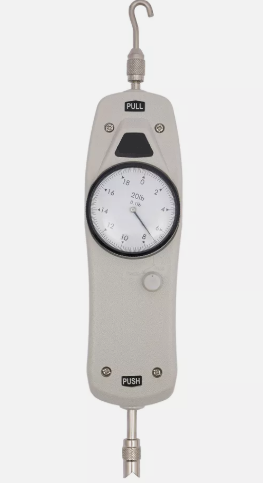
Ensuring that doorways adhere to the Americans with Disabilities Act (ADA) is not just about compliance; it’s about granting access and dignity to everyone. From ADA bathroom requirements that specify doorway dimensions, to the contrasts in color that must mark the door from the wall, these details matter deeply. The right door width allows freedom for a wheelchair, while suitable hardware makes a door accessible to a person with limited hand mobility. In this article, readers will uncover the critical components of ADA door accessibility—from the essential swing clearance to the nuanced door hardware requirements. Engage with the content to ensure that facilities meet these vital standards, making inclusivity more than just an intention, but a realized practice.

Door dimensions serve as a critical factor in ensuring accessibility, and adhering to the Americans with Disabilities Act (ADA) standards is non-negotiable for public establishments. A door’s width prescribes the ease with which wheelchair users can traverse between rooms, with a particular emphasis on the clear passage across thresholds. The regulation stipulates a minimum clear width that transforms standard entryways into gateways of opportunity for individuals with disabilities ada bathroom requirements. Even so, nuances exist within these mandates, such as the dimensions required of a fire door compared to those leading to a kitchen’s verdana or space below a countertop. This overview scrutinizes the fundamental ADA criteria for door width, evaluates the influence of these dimensions on wheelchair access, and recognizes circumstances where standard door width prescriptions might be flexibly applied.
Within the parameters defined by the ADA, doors in public spaces must present a minimum clear opening of 32 inches when the door is open to 90 degrees, ensuring passage for wheelchair users. A related detail is the height and positioning of the door handle, which must not exceed 48 inches from the floor, making it accessible for those with varying ranges of motion. While the table of contents in the ADA guidelines does not specifically itemize door handles or the clear space needed to maneuver around objects such as a urinal, it implicitly encompasses all facets of doorway design to create unhindered avenues for entry and exit, akin to an open gate that invites all to pass freely.
The breadth of a door directly correlates to the degree of independence a wheelchair user experiences when accessing various facilities, such as public restrooms adorned with cabinetry or a customer service area in a retail establishment. For instance, a doorway that meets the ADA minimum allows unobstructed entry and exit, akin to how a clearly marked bus stop offers certainty and ease to commuters. Inclusion of these accessibility features within the website design of a building’s web page further emphasizes the establishment’s commitment to serving all customers, acting as a digital beacon mirroring the physical welcoming nature of ADA-compliant doorways.
In certain instances, deviations from the standard door width are permitted by the ADA when the specific layout of facilities, such as the placement of a toilet or the number of fixtures, mandates alternative configurations. For example, a door may have a narrower opening if a ramp is required within the space, provided that the ramp‘s incline does not obstruct the entryway. Moreover, ample room for a wheelchair to turn, typically ninety degrees perpendicular to the door, might justify a narrower door under limited circumstances, detailed further in ADA guidelines available in pdf format for precise reference and implementation.
Now, having grasped the fundamentals of door width per ADA standards, let’s progress to the vital specifics of door hardware and the nuances of ADA opening requirements. Ensure your facility meets all accessibility criteria by mastering these essential aspects.

Door hardware, including handles, locks, and opening mechanisms, constitutes a vital aspect of the Americans with Disabilities Act of 1990 to ensure that individuals using a wheelchair can independently access public facilities. Hardware specifications not only affect the physical opening of doors but also relate to the web content accessibility guidelines that inform site and facility standards such as van accessible parking and properly equipped restrooms. Precise clearance levels for door hardware are mandated to accommodate the unobstructed maneuverability of wheelchairs, while the required force for door operation is defined to permit ease of entry without undue effort, paralleling considerations in the plumbing industry for accessible fixture use. The following discourse examines the subtleties of these requirements, underscoring how they converge to create environments that uphold the integrity of accessibility standards.
In compliance with ADA standards, door hardware must be operable with one hand and require no tight grasping or twisting, ensuring that individuals can open doors without undue strain. The design and placement of handles and locks play a critical role in the readability of a space, much as clear signage facilitates navigation to a pier or along an aisle. Similarly, in web design, the accessibility of a website hinges on intuitive interfaces and user-friendly features that provide virtual curb access, reflecting the inclusive ethos that governs physical accessibility requirements.
Door hardware clearance levels, as stipulated by the ADA, are designed to facilitate barrier-free access with considerations for varied user capabilities. Specific guidelines require that the space around door handles accommodate a user’s reach and mobility, ensuring that those in wheelchairs have equivalent access to facilities, including kitchens. Further information on clearance levels is readily accessible via https resources maintained by ADA experts.
Under the ADA, doors should be operable with minimal force to accommodate individuals with disabilities, ensuring that everyone has the opportunity to independently access bathroom facilities or reach a telephone in case of emergency. Properly calibrated doors, aligned with ADA guidelines, reduce the physical strain for a patient, making the act of opening them as effortless as the flow of water.
Understanding the complexities of ADA door hardware and opening specifications paves the way for a broader discussion. Let’s examine the impact of door thresholds on ADA compliance and their significance in creating accessible environments.

Door thresholds occupy a fundamental position in the path leading up to ADA compliance, requiring precise attention to detail to guarantee unobstructed passage for all individuals. In this context, the maximum height allowed for thresholds is a significant factor—any vertical barrier must align with ADA standards to prevent obstacles for those who use mobility aids. Beyond height restrictions, the choice in materials and design of thresholds can greatly enhance doorway accessibility, incorporating features that minimize potential for interference with mobility devices or knee space. These considerations are amplified when installing handrails, ensuring a seamless transition while adhering to guidelines that foster an environment where sinks, service counters, and other amenities remain within reach for persons of all abilities. Addressing these threshold barriers entails a conscious evaluation of the built environment to ensure that every entry point becomes an ada compliant avenue for access and independence.
In compliance with ADA directives, door threshold heights must not exceed a half-inch for exterior sliding doors or a quarter-inch for other types of doors, ensuring that individuals, including those undergoing physical therapy, can navigate across these entryways without obstruction. Adherence to these standards creates equitable access, clear as the font on wayfinding signage or the smooth operation of an elevator, and prevents the need for undue toe clearance that could impede wheeled mobility devices.
Concerning doorways, selecting the appropriate materials and designs is pivotal for enhancing web accessibility, as well as preventing the risk of a lawsuit due to non-compliance. For instance, a smooth transition surface can significantly reduce the effort required to wheel over a threshold, while durable materials that can resist wear ensure long-term usability. Design elements like levers that can be operated with a closed fist or a single finger further illustrate the meticulous attention to every point of human contact. Additionally, incorporating clear markings with a high-contrast typeface on door signage aids those with visual impairments in navigating smoothly through doorways.
In the digital era where the internet serves as a global nexus for commerce and interaction, constructing ADA-compliant door thresholds becomes emblematic of wider efforts to eradicate discrimination and promote accessibility in both physical and virtual spaces. This same inclusive spirit that guides the construction of platforms and spaces for passenger transit, also inspires web developers to create an internet that welcomes users regardless of their ability.
| Aspect of Compliance | Physical Construction | Internet Accessibility |
|---|---|---|
| Threshold Height | Must not exceed appropriate measurements to facilitate smooth passage | Design interfaces to be barrier-free and navigable for assistive technologies |
| Materials | Durable and resistant to ensure long-term passage for users | Should cater to various user interactions and avoid causing screen-reader errors |
| Discrimination Prevention | Environments tailored to prevent exclusion based on mobility needs | Websites structured to support universal access and prevent exclusion of users |
Door thresholds, akin to the pivotal bridges in transportation, must facilitate seamless access in alignment with ADA mandates, eschewing any form of discrimination that might hinder the freedom of movement for individuals with disabilities.
Moving beyond the importance of door thresholds, one must also consider the pivotal element of clearance space. The swing of a door plays a significant role in ensuring full accessibility in compliance with ADA standards.

Swing clearance stands as a pivotal component of ada compliance, ensuring doors within public spaces accommodate the needs of all individuals, including those with disabilities. This space, measured from the face of the door to the stop when the door is at its maximum open angle, is essential for maintaining unobstructed pathways, whether one is heading towards a fire alarm system to ensure safety or navigating through toilet compartments and parking spaces. The Americans with Disabilities Act articulates specific requirements for swing clearance in various environments to ensure these transit areas remain functional and accessible. For doors that fall short of these standards, a range of solutions can be implemented, and considerations given to features such as the hinge‘s side of the door may prove pivotal in augmenting passageway accessibility, aiding the creation of inclusive spaces.
Swing clearance in ADA compliance refers to the necessary space for a door to open fully, permitting unhampered passage. In retail environments, adequate swing clearance is crucial, ensuring that all customers, including those with disabilities, can navigate the shop floor freely. The consideration of swing clearance extends to employment areas, where barrier-free entry and exit are vital for employees’ mobility, enhancing the inclusiveness of the workplace.
Furthermore, this concept of swing clearance is increasingly mirrored in the virtual space, where mobile app developers are influenced by such physical standards to enhance accessibility. By ensuring that digital doors to online shopping platforms are just as accessible, retailers can provide a seamless experience for all users.
The law requires that ADA swing clearance standards adapt to the varied spaces found in buildings, ensuring that doorways are not obstructed by technology such as automated systems or additional hardware. Proper clearance allows accessible use of the latch without obstruction, with the height of the mechanism being easily reachable for all users. For additional clarity, entities often provide an faq section detailing these requirements, facilitating understanding and compliance.
For doors that fall short of ADA swing clearance standards, retrofitting may be necessary to improve usability and ensure compliance. Solutions include extending the length of door hinges to allow doors to swing wider, providing adequate wrist clearance for users with disabilities. In cases where structural changes are not feasible, alternative accommodations, such as providing additional accessible parking or creating an alternative shower area with compliant access, may be a suitable resolution.
As the discourse shifts from swing clearance to automated systems, it’s imperative to delve into the role of technology in ensuring ADA compliance. Let’s assess how automated doors serve as a pivotal element in accessible design.

In the bustling heart of a shopping mall, the operation of automated doors symbolizes a commitment to inclusivity and ADA compliance. These advanced entryways, supported by steel mechanisms robust enough to handle high traffic, offer an essential solution where manual door operation could pose a challenge for some individuals. Considering the right dimension is just as vital for automated doors as it is for a properly installed grab bar—both are paramount for facilitated access. Automated doors act as a mirror, reflecting the values of modern architecture by dutifully serving a diverse range of mobility needs. This section delves into the intricacies of when and where automated doors become a necessary aspect of ADA compliance, explores their advantages for enhancing accessibility, and unpacks the technical specifications required to ensure these automated portals successfully meet the established standards.
Automated doors play an integral role in ADA compliance to accommodate individuals who utilize mobility devices such as scooters. The ADA regulations necessitate a minimum door width of 32 inches to ensure that persons operating scooters can enter and exit buildings without barriers, a provision that can be particularly challenging in structures subject to historic preservation. Documentation, whether in blueprint or digital format, must delineate adherence to these criteria, complementing efforts to preserve historical architecture while ensuring modern accessibility standards. Inclusion of automated doors facilitates a seamless transition from the sidewalk into the premises, offering an equivalent user experience for all visitors and upholding the ADA‘s intent.
| Compliance Feature | Requirement | Impact |
|---|---|---|
| Automated Doors | Installation may be required for buildings with high mobility device traffic | Enhances accessibility for scooter users and others with limited mobility |
| Minimum Door Width | 32 inches clear opening for accessibility | Ensures smooth ingress and egress for individuals using mobility aids |
| Historic Preservation | Must comply with ADA while retaining historical integrity | Enables modern accessibility without compromising historical value |
| Documentation | Clear and comprehensive detailing of compliant elements | Assists in verifying and maintaining accessibility standards |
| Sidewalk to Building Transition | Accessible path without obstructions | Promotes an unbroken route of travel for individuals with disabilities |
Automated doors facilitate a barrier-free transition from vehicles into buildings, ensuring compliance with building codes and enhancing accessibility. They effectively mitigate challenges posed by stairs and allow smooth ingress for individuals with mobility impairments, much like priority seating does on a bus. By catering to a diverse range of transport and mobility requirements, automated doors serve not only as an entry point but as a testament to a building’s commitment to inclusivity.
Automated doors, a testament to advancing accessibility, must cater to a complex set of technical requirements as outlined by the ADA. These include adequate space for users to maneuver without obstacles, door closing mechanisms that don’t require manual force, which is particularly useful near less mobile-friendly areas like bathtubs or turnstiles. Furthermore, the integration of computer hardware must be executed in a manner that ensures smooth operation without imposing additional efforts for users, similar to expectations from an accommodating door closer.
| ADA Feature | Technical Specification | User Impact |
|---|---|---|
| Space | Ample maneuvering clearance | Increases user mobility and access |
| Automated System | Integration of computer hardware for smooth operation | Automates passage without physical strain |
| Door Closer | Gentle and consistent closing mechanism | Allows for easy transit without hindrance |
Ensuring that automated doors meet ADA standards is just the beginning of the journey. Regular maintenance checks become the critical pathway to sustaining accessibility for all.

Regular oversight and upkeep of ADA compliant door dimensions are pivotal to sustaining an accessible environment. Establishments must enact a program of scheduled maintenance to detect and correct issues ranging from a misaligned closet door that impedes clear passage to a malfunctioning automated door that could obstruct a boat‘s boarding platform. Inspections and repairs must encompass the functionality of the door as perceived through various modes of interaction, including how effectively a screen reader relays electronic door information to users with visual impairments. Moreover, meticulous record-keeping of maintenance activities and ADA compliance checks is imperative in upholding both the physical and digital accessibility standards set forth by the law.
Establishing a systematic maintenance routine is imperative for facility managers to ensure that doorways continue to comply with ADA standards. Routine checks, combined with timely repairs, prevent accessibility features from falling into disrepair, providing assurance that individuals with disabilities can navigate spaces effectively and safely at all times.
Maintenance checks on ADA compliant doors frequently uncover issues that can impact functionality, such as door openers that fail to respond appropriately, thresholds that have become obstructed or uneven, and wear and tear on handles and hinges that make doors challenging to navigate. Addressing these common problems is critical to maintaining an environment that is accessible to all:
Thorough records of ADA compliance checks are essential for verifying the integrity of door accessibility over time and for demonstrating adherence to regulations during audits or legal reviews. This documentation serves as both a blueprint for future maintenance and a historical record of the care taken to maintain accessibility standards.
| Documentation Aspect | Purpose | Use Case |
|---|---|---|
| ADA Compliance Records | To evidence due diligence in maintaining accessible features | Audit Review and Legal Defense |
| Maintenance History | To track the longevity and functionality of accessibility components | Future Repairs and Upgrades |
| Incident Reports | To document any accessibility failures and subsequent remedies | Continuous Improvement of Facilities |
Adhering to ADA compliant door sizes and accessibility standards ensures that all individuals, regardless of mobility, have unhindered access to public spaces. Automated doors, precise swing clearance, and appropriate threshold heights play significant roles in fostering inclusive environments. Regular maintenance and detailed documentation of ADA features certify the persistence of accessible spaces over time. Collectively, these guidelines underscore a commitment to upholding the rights and independence of people with disabilities.



Measuring door pressure is acting in compliance with building regulations, like the Americans with Disabilities Act (ADA). It’s an important step in ensuring accessibility, safety

When talking about building safety, the first things that come to mind are fire alarms, emergency exits and security systems. Meanwhile, the one tool that